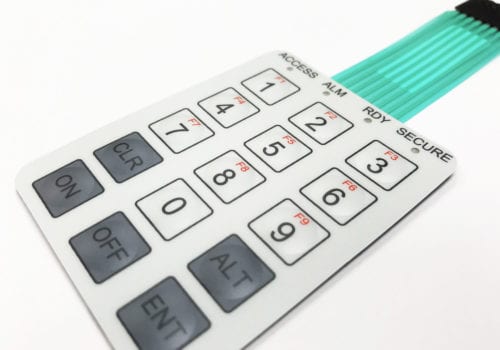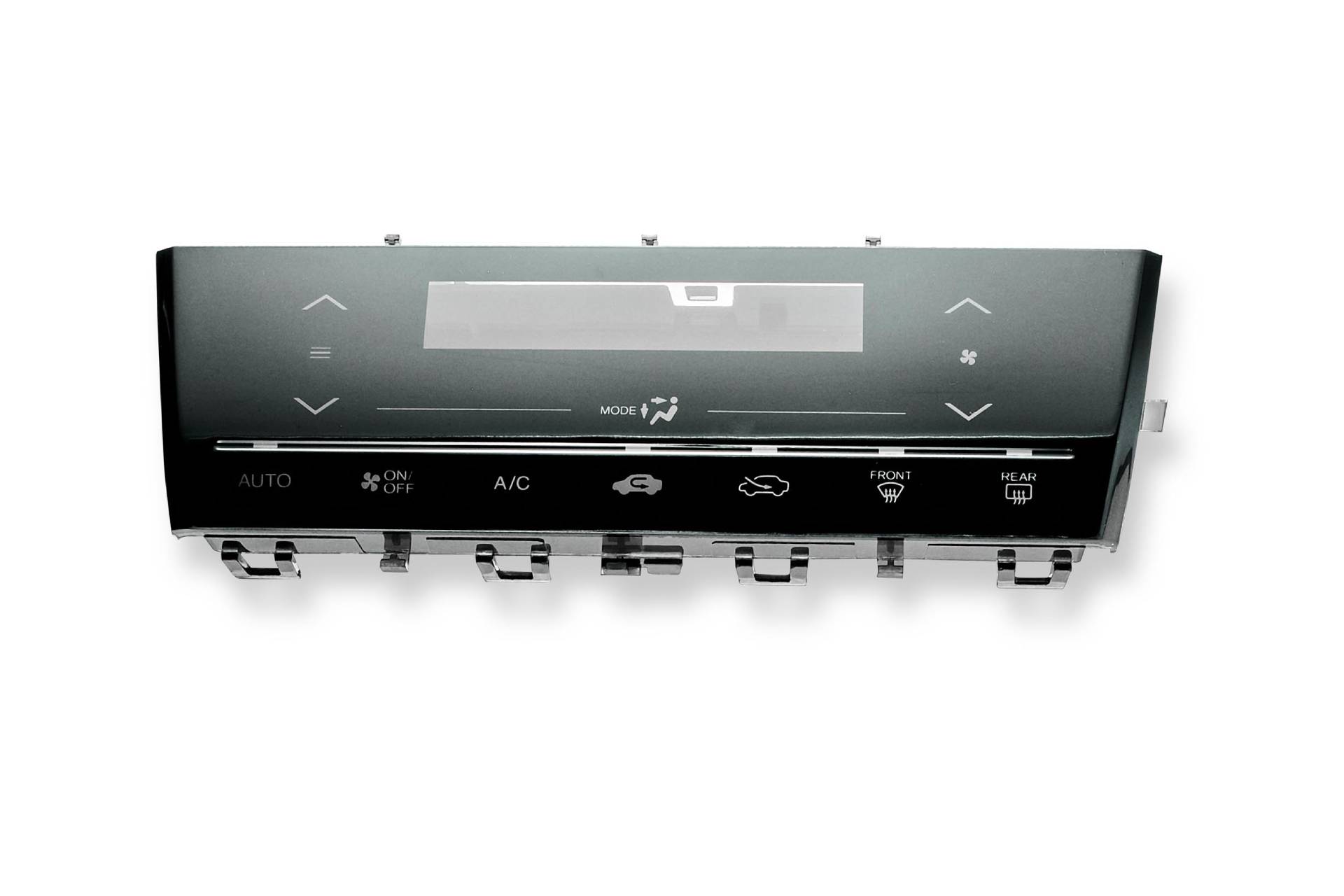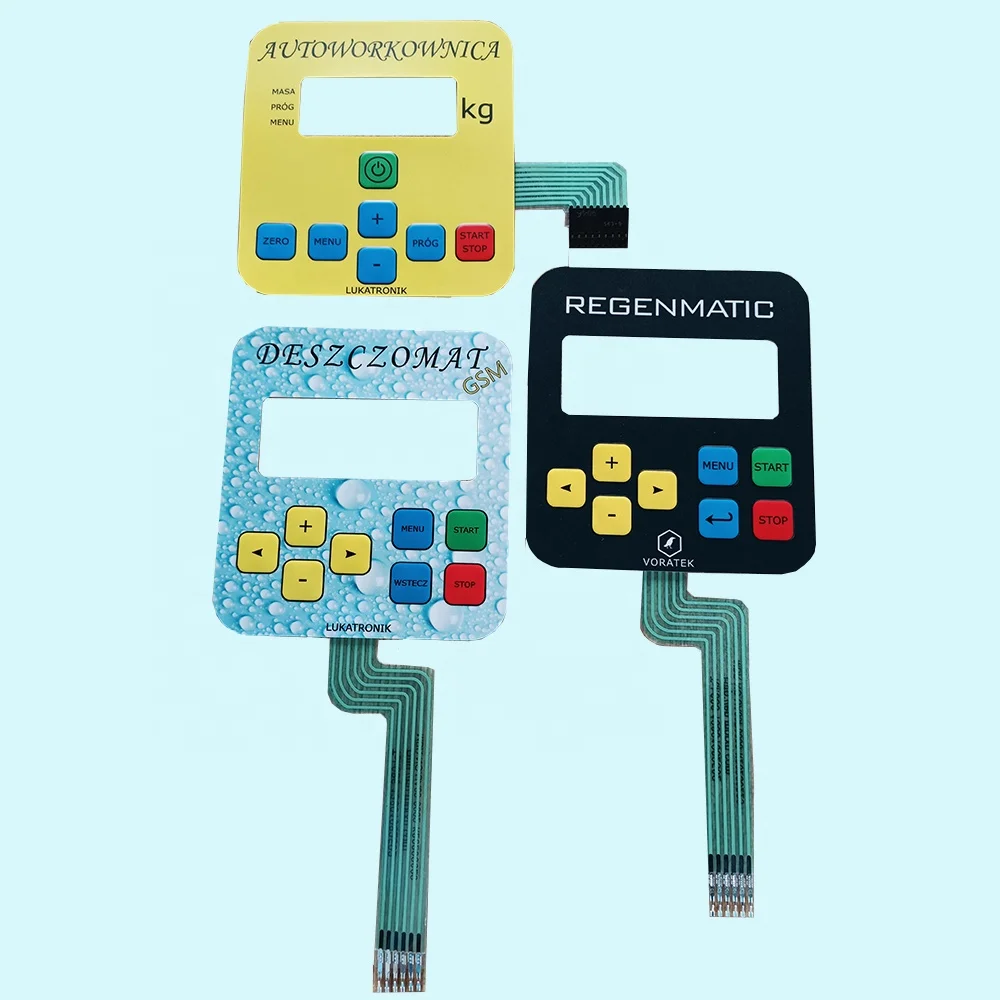Membrane Switch Manufacturer Focused on User-Centered Design
Discovering the Production Process of Membrane Switch for Different Industries
The manufacturing procedure of Membrane buttons is a complex venture that demands precision and interest to detail. From picking suitable materials to implementing strenuous quality assurance measures, each action plays an essential role in guaranteeing performance. Different markets, including automobile and clinical, rely on these parts for their one-of-a-kind applications. Recognizing the ins and outs of this process discloses considerable insights right into how these buttons are produced and their effect throughout diverse fields.
Comprehending Membrane Switches: An Introduction

Secret Materials Utilized in Membrane Switch Manufacturing
In Membrane switch manufacturing, the selection of vital products greatly affects performance and toughness. Conductive products, adhesives, and finishes play crucial roles, while substrate selection affects total performance and dependability. Comprehending these components is vital for maximizing the layout and production of Membrane switches.
Conductive Materials Overview
Conductive products play an important duty in the capability of Membrane buttons, guaranteeing trustworthy electrical links within the gadget. Typically utilized products include silver, copper, and carbon-based inks, each offering distinctive benefits. Silver is favored for its high conductivity and durability, making it optimal for applications calling for robust efficiency. Copper, while slightly much less conductive than silver, is an economical alternative usually utilized in published circuits. Carbon-based inks offer a functional option, ideal for applications where versatility and lower costs are focused on, although they have actually lower conductivity contrasted to metal alternatives. The choice of conductive products directly impacts the general integrity, lifespan, and performance of the Membrane switch, making it an essential consideration in the manufacturing procedure.
Adhesives and Coatings
Adhesives and finishes are necessary parts in the manufacturing of Membrane switches, providing vital bonding and safety buildings. These products guarantee that various layers of the switch, including graphic overlays and circuitry, stick firmly to one another, improving longevity and functionality. Typically used adhesives include pressure-sensitive adhesives (PSAs) and epoxy-based formulas, which provide strong adhesion and resilience. Coatings, such as polyurethane or acrylic, serve to safeguard against environmental factors, including moisture, abrasion, and chemicals. Furthermore, layers can boost responsive comments and visual charm, adding to the total customer experience. The choice of proper adhesives and finishes is essential for optimizing efficiency and durability in diverse applications across different sectors, making sure that Membrane switches over fulfill particular operational needs.
Substrate Option Variables
Substrate selection plays a necessary function in the production of Membrane buttons, as it considerably affects their overall efficiency and longevity. Secret materials such as polyester, polycarbonate, and adaptable printed circuit card (FPCBs) are generally utilized for their distinct buildings. Polyester is favored for its cost-effectiveness and resistance to abrasion, making it appropriate for applications with high wear. Polycarbonate offers premium clearness and influence resistance, suitable for settings requiring high visibility. FPCBs supply enhanced versatility and are often made use of in complex layouts. The choice of substrate additionally impacts variables like thermal stability, chemical resistance, and simplicity of printing. Ultimately, choosing the ideal substrate is essential for guaranteeing the capability and longevity of Membrane switches across numerous sectors.
The Design Process of Membrane Changes
The layout process of Membrane buttons is a critical phase that considerably affects the capability and aesthetics of the final item - membrane switch manufacturer. It starts with defining the certain needs of the application, including measurements, button layout, and tactile responses choices. Developers have to consider individual interaction, ensuring that the switch is user-friendly and accessible.Next, materials are selected based on durability, adaptability, and environmental resistance. The combination of graphics and branding elements is also essential, as it boosts visual allure and communication. Prototyping permits repetitive testing, making it possible for changes based upon user feedback and performance evaluations.Additionally, the style has to account for the electrical elements, such as circuits and ports, guaranteeing dependability and convenience of use. Eventually, a successful style harmonizes functionality, looks, and customer experience, paving the means for efficient manufacturing and long-lasting performance in numerous sectors
Printing Techniques for Membrane Changes
The printing techniques made use of in Membrane switch manufacturing play a crucial function in establishing the last product's top quality and functionality. Screen printing offers benefits such as resilience and dynamic shade application, while electronic printing innovations supply versatility and precision in design. Recognizing these approaches can check substantially influence the total efficiency of Membrane buttons in different applications.
Screen Printing Benefits
Many benefits make display publishing a favored strategy for producing Membrane switches. This method enables top quality, comprehensive styles and check out here lively shades, which are essential for interface applications. Display printing is specifically reliable for applying thick ink layers, enhancing toughness and responsive responses. Additionally, it offers exceptional adhesion to numerous substratums, making certain longevity in requiring environments. The procedure is cost-efficient for big production runs, as it decreases configuration time and waste. Display printing supports a wide range of inks, including specialized and UV-curable choices, making it possible for convenience in style. Its capacity to generate regular results throughout numerous devices makes it a dependable selection for producers intending for high quality and performance in Membrane switch manufacturing.
Digital Printing Innovations

Innovations in digital printing modern technology are changing the production of Membrane switches, providing producers cutting-edge remedies that enhance layout versatility and effectiveness. Digital printing enables high-resolution graphics and intricate layouts, making it possible for customized branding and performance without the limitations of typical techniques. This technique minimizes arrangement times and expenses, helping with much shorter production runs and marginal waste, making it perfect for organizations with differing demands. Furthermore, innovations in ink solutions provide much better sturdiness and bond, making certain durability in numerous settings. As industries significantly seek complex and individualized layouts, digital printing stands apart as a crucial strategy, setting a new standard in Membrane button production. The combination of these advancements positions suppliers to fulfill evolving market requires successfully.
Assembly and Layering of Membrane Switch Elements
Careful setting up and layering of Membrane switch components are crucial to guaranteeing capability and toughness. This process starts with the exact placement of various layers, consisting of the graphic overlay, sticky, circuit layer, and backing product. Each element should be carefully positioned to maintain electrical honesty and individual interface responsiveness.During assembly, conductive traces are used to the circuit layer, normally made from materials like polyester or polycarbonate. This layer is essential, as it sends signals when stress is used. The glue used for bonding these layers is additionally chosen for its capability to endure environmental stress and anxieties while maintaining a secure bond.Heat and pressure are usually applied during the setting up process to ascertain that the layers stick effectively without compromising the functionality of the switch. Ultimately, focus is offered to the edge securing to shield against dampness and contaminants, safeguarding the durability of the Membrane switch in various commercial applications.
Quality Control Steps in Membrane Switch Production
Quality assurance actions play a necessary function in making certain the integrity and efficiency of Membrane switches following the assembly and layering of their elements. In the production process, numerous key examinations are carried out to maintain high quality requirements. These include visual assessments for flaws in printing and sticky application, in addition to practical tests to validate the responsiveness of each switch.Additionally, environmental testing is performed to analyze the buttons' durability against temperature fluctuations and moisture exposure. Manufacturers commonly apply analytical process control (copyright) techniques to keep an eye on manufacturing uniformity, allowing early discovery of anomalies.Furthermore, traceability systems are established to track materials and elements, making sure liability and assisting in recalls if needed. Calibration of equipment and adherence to industry requirements are also vital to keeping item integrity. Collectively, these quality assurance steps safeguard the efficiency of Membrane changes across different applications, inevitably improving customer satisfaction.
Applications of Membrane Changes Throughout Different Industries
Membrane buttons are utilized throughout a diverse array of industries, showcasing their flexibility and flexibility. In the medical industry, they provide trustworthy and water-proof user interfaces for gadgets such as diagnostic equipment and infusion pumps, ensuring hygiene and simplicity of usage. The vehicle sector uses Membrane switches for control panel controls, making it possible for smooth interaction in between the chauffeur and automobile systems.In consumer electronic devices, these buttons are located in appliances and portable tools, offering a smooth, contemporary aesthetic while improving performance. Industrial applications likewise utilize Membrane switches for equipment control panels, where durability and resistance to extreme problems are essential.Furthermore, i loved this the aerospace and protection industries make use of Membrane switches for cockpit instrumentation and communication systems, prioritizing dependability and efficiency under extreme problems. Overall, Membrane switches play an essential role in improving the customer experience and operational performance across different domain names.
Regularly Asked Questions
Just how Long Does It Take to Produce a Membrane Layer Switch?
The manufacturing time for a membrane switch usually varies from a couple of days to a number of weeks - membrane switch manufacturer. Aspects affecting this period include style complexity, material availability, and production quantity, all impacting the total timeline noticeably
What Is the Normal Lifespan of a Membrane Layer Switch?
The normal lifespan of a membrane layer switch usually varies from 1 to 5 million actuations, depending on factors such as worldly quality, environmental conditions, and use regularity, considerably impacting sturdiness and total efficiency.
Can Membrane Switches Be Personalized for Specific Applications?
Membrane switches can without a doubt be customized for details applications. Their style versatility permits alterations in size, form, colors, and graphics, ensuring compatibility with one-of-a-kind demands throughout various industries and enhancing capability and customer experience.

Are Membrane Switches Over Ecologically Friendly?
The ecological impact of Membrane switches varies. Some materials used may not be environment-friendly, while developments in making processes are increasingly concentrating on sustainability, intending to lower waste and promote recyclable elements in their manufacturing.
What Are the Common Failing Modes of Membrane Buttons?
Common failure settings of Membrane switches consist of delamination, sticky failing, damage from use, wetness ingress, and electric failures. These issues can considerably impact performance, performance, and life expectancy in various applications throughout various markets. Membrane switches can be personalized to fit certain layout needs, such as capability, size, and form, making them very adaptable.The building commonly entails several layers, including a visuals overlay, glue, and a circuit layer, which work with each other to produce a seamless individual experience. In Membrane button production, the choice of vital materials greatly influences performance and longevity. The vehicle market employs Membrane buttons for control panel controls, making it possible for smooth communication in between the driver and automobile systems.In customer electronic devices, these buttons are discovered in devices and handheld devices, using a streamlined, modern visual while enhancing performance. Industrial applications likewise take advantage of Membrane changes for equipment control panels, where resilience and resistance to harsh conditions are essential.Furthermore, the aerospace and defense fields use Membrane buttons for cockpit instrumentation and interaction systems, focusing on integrity and performance under extreme conditions. Membrane switches can certainly be personalized for certain applications.